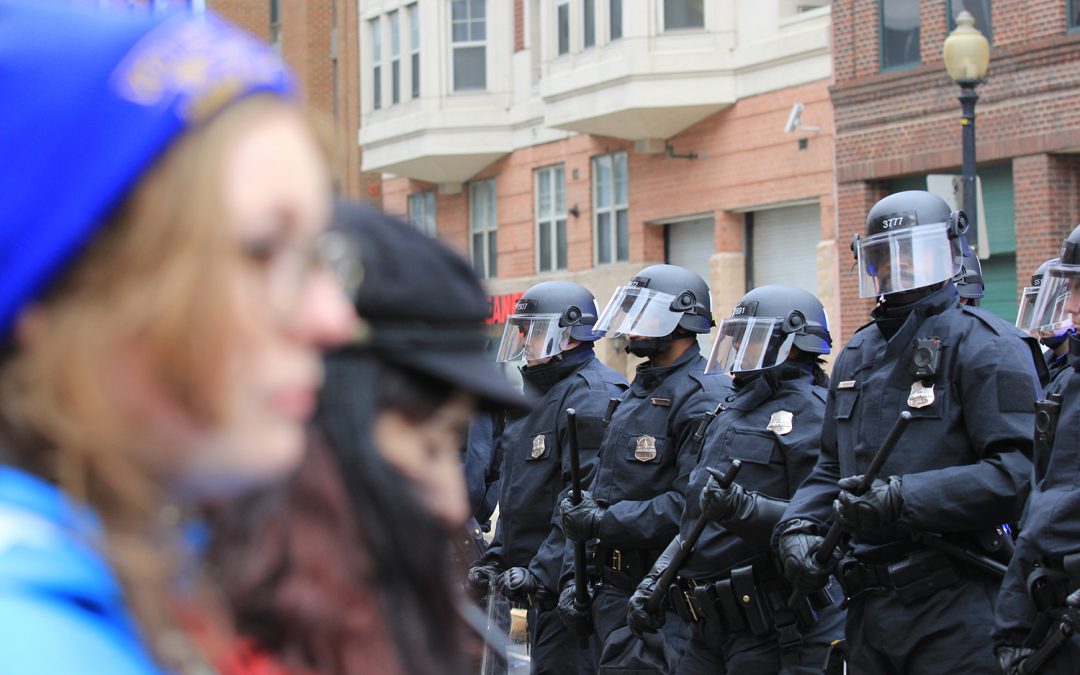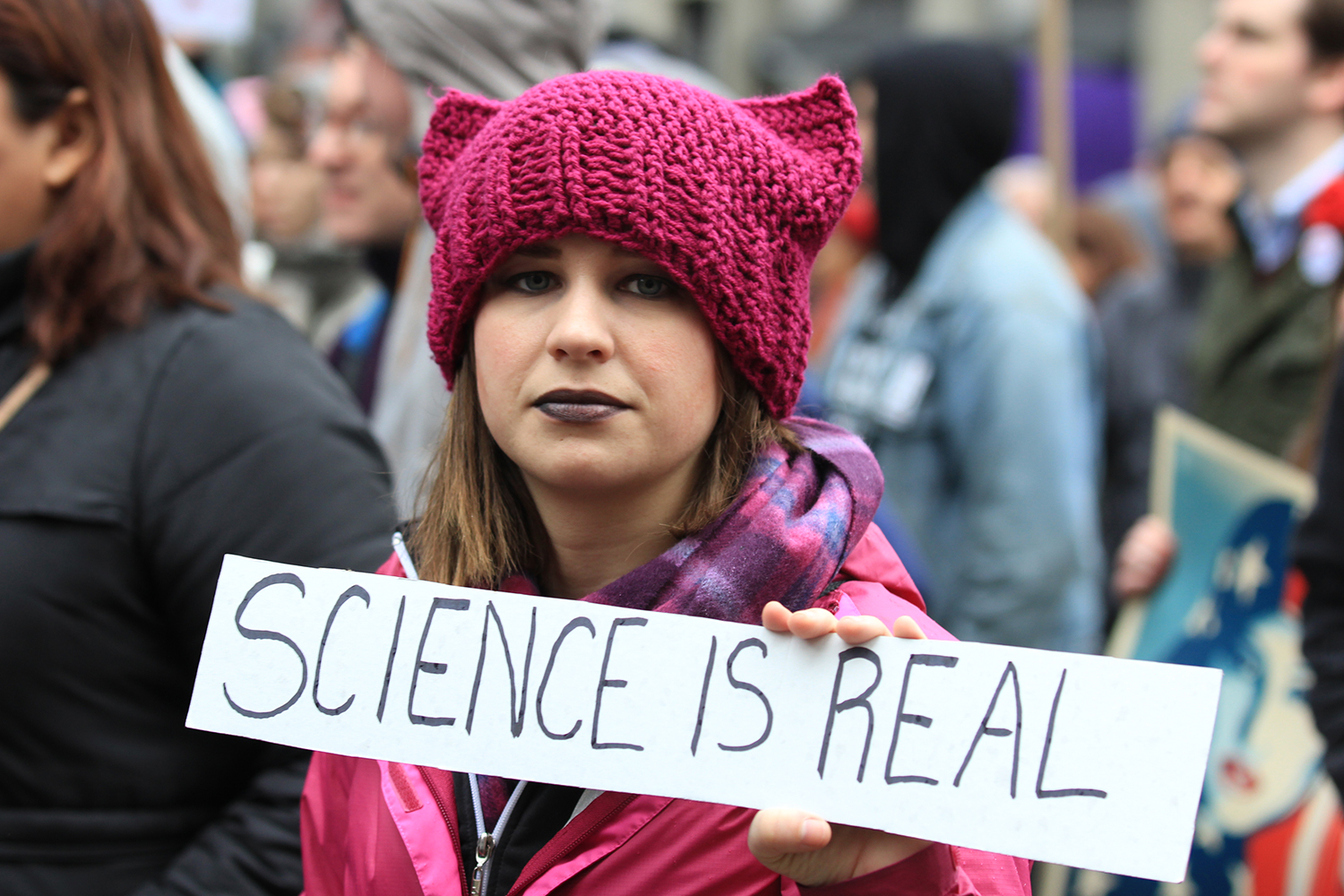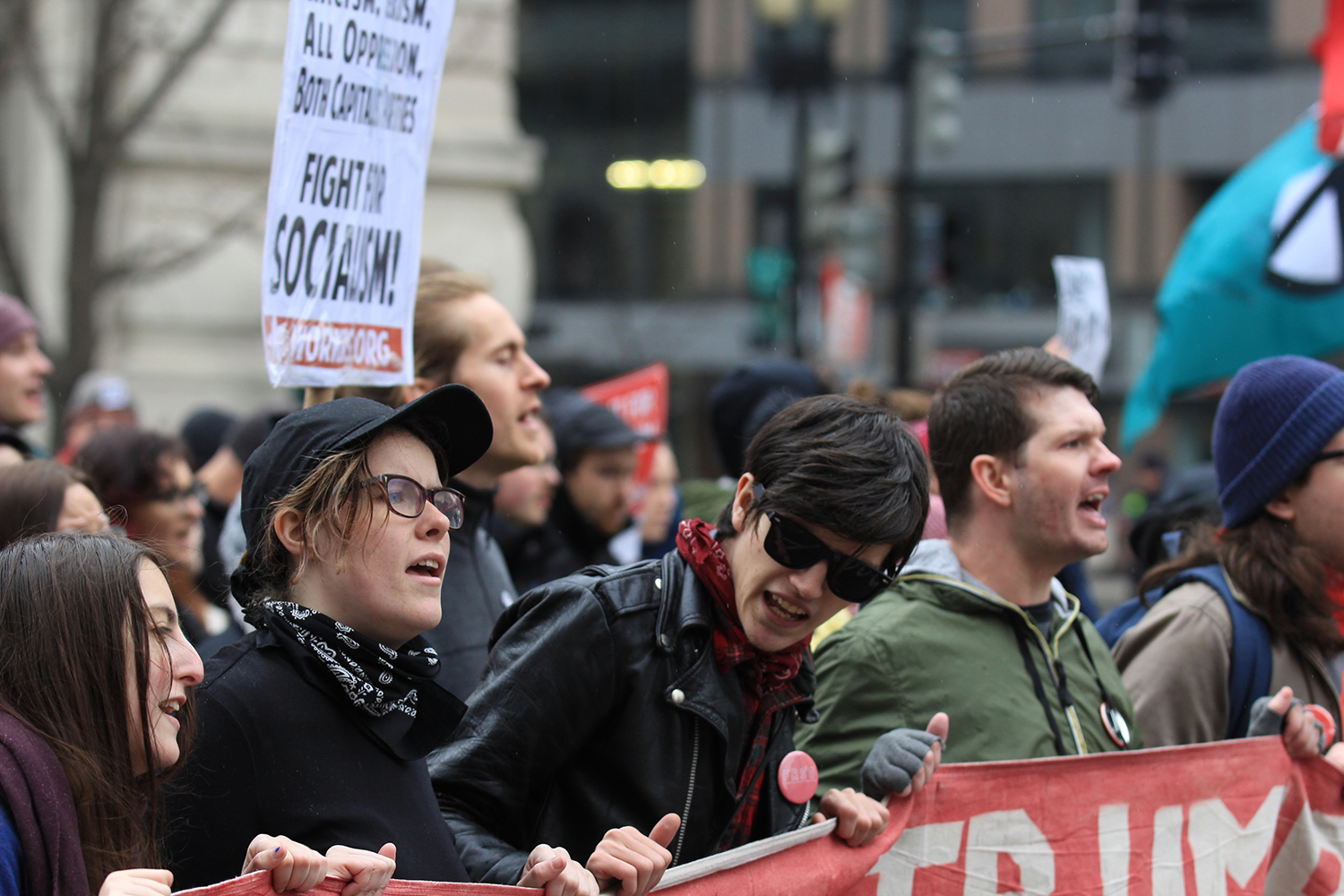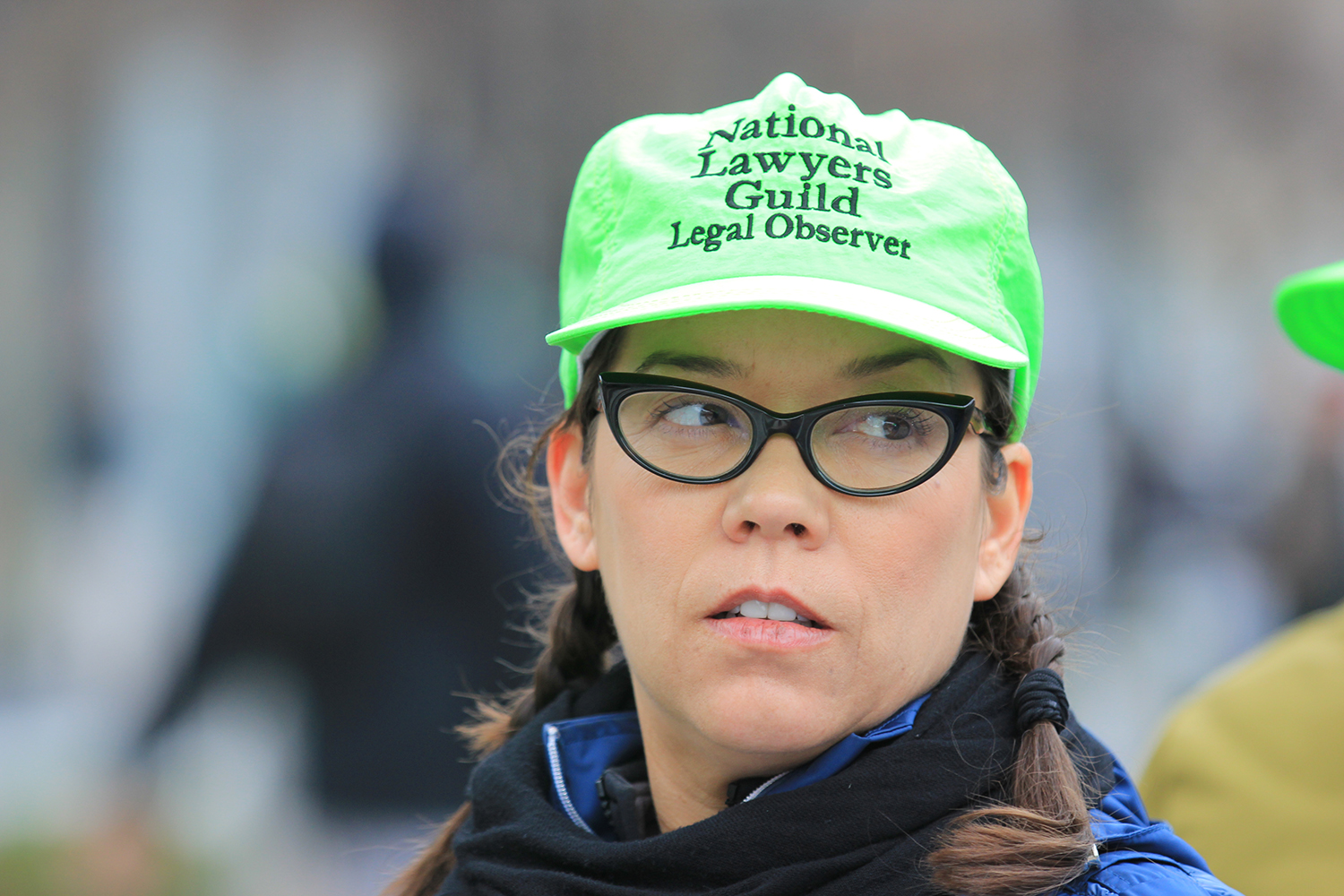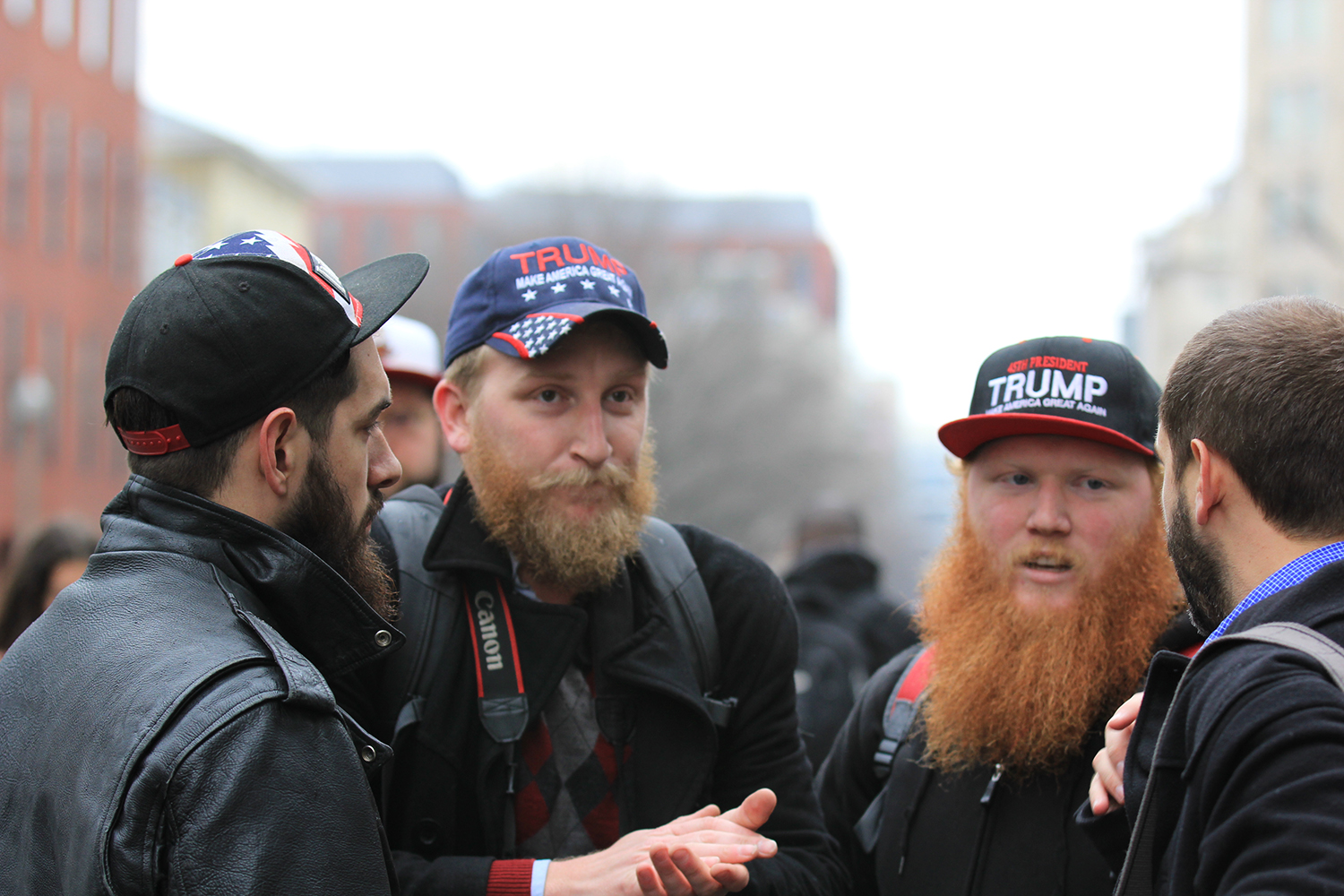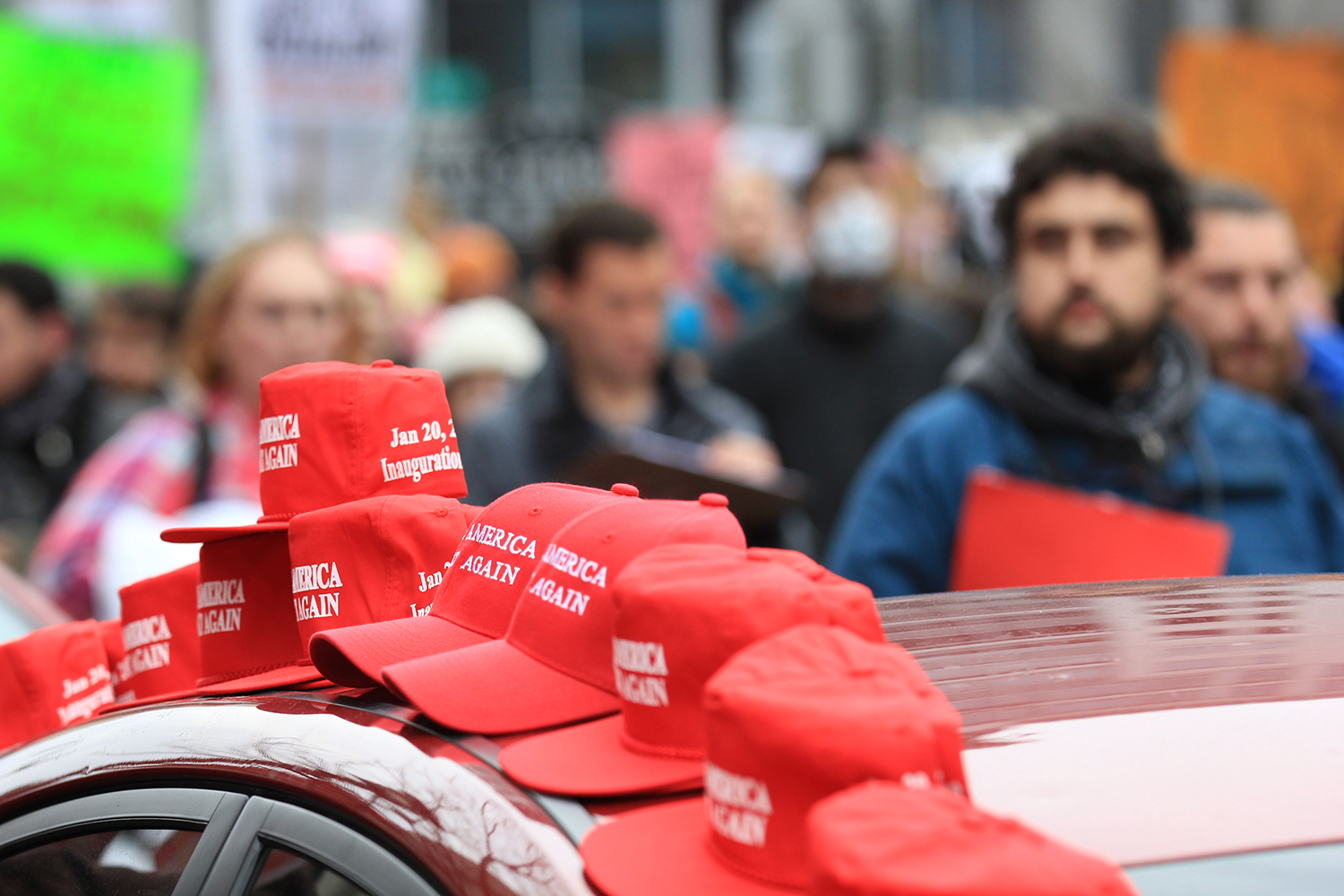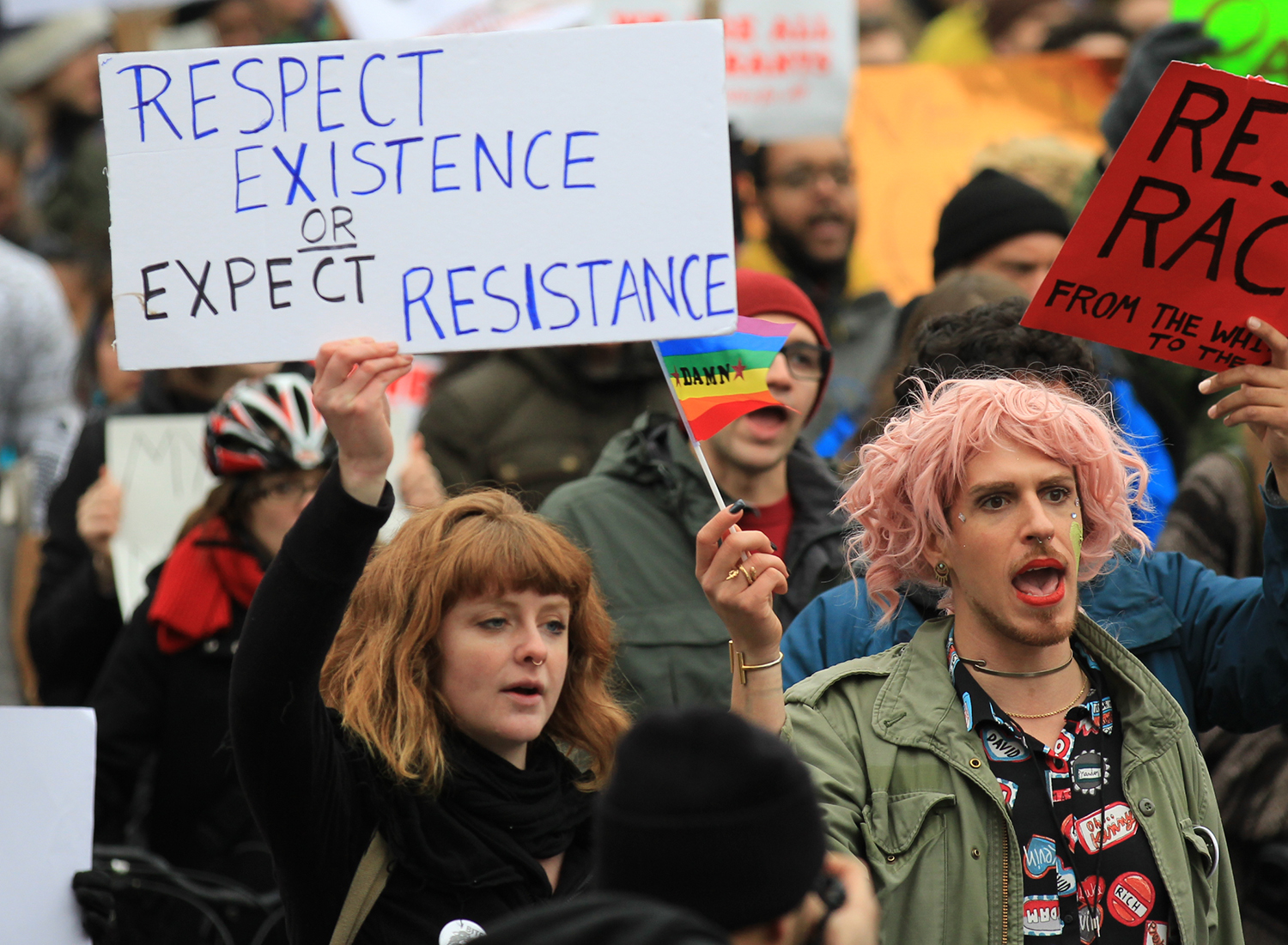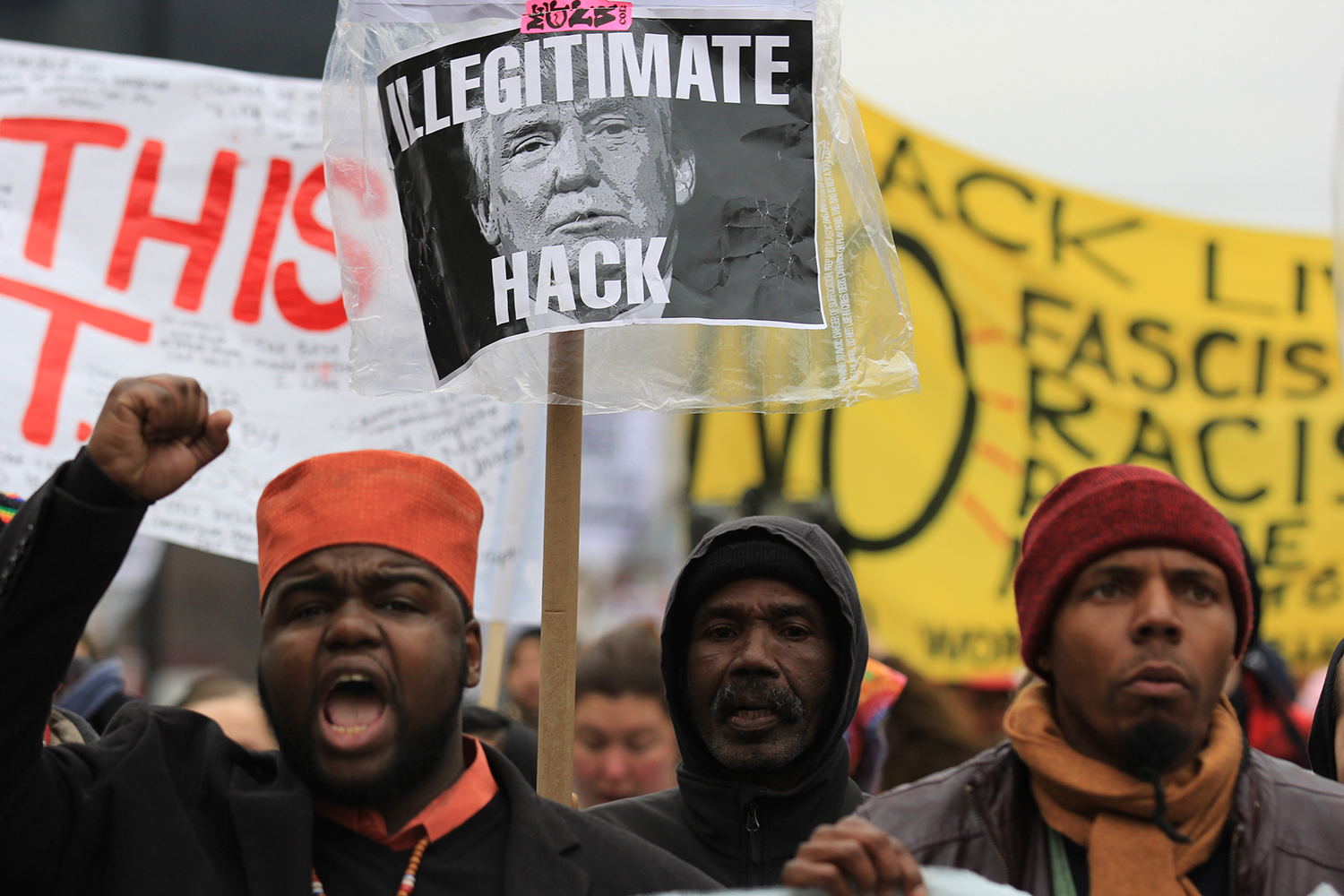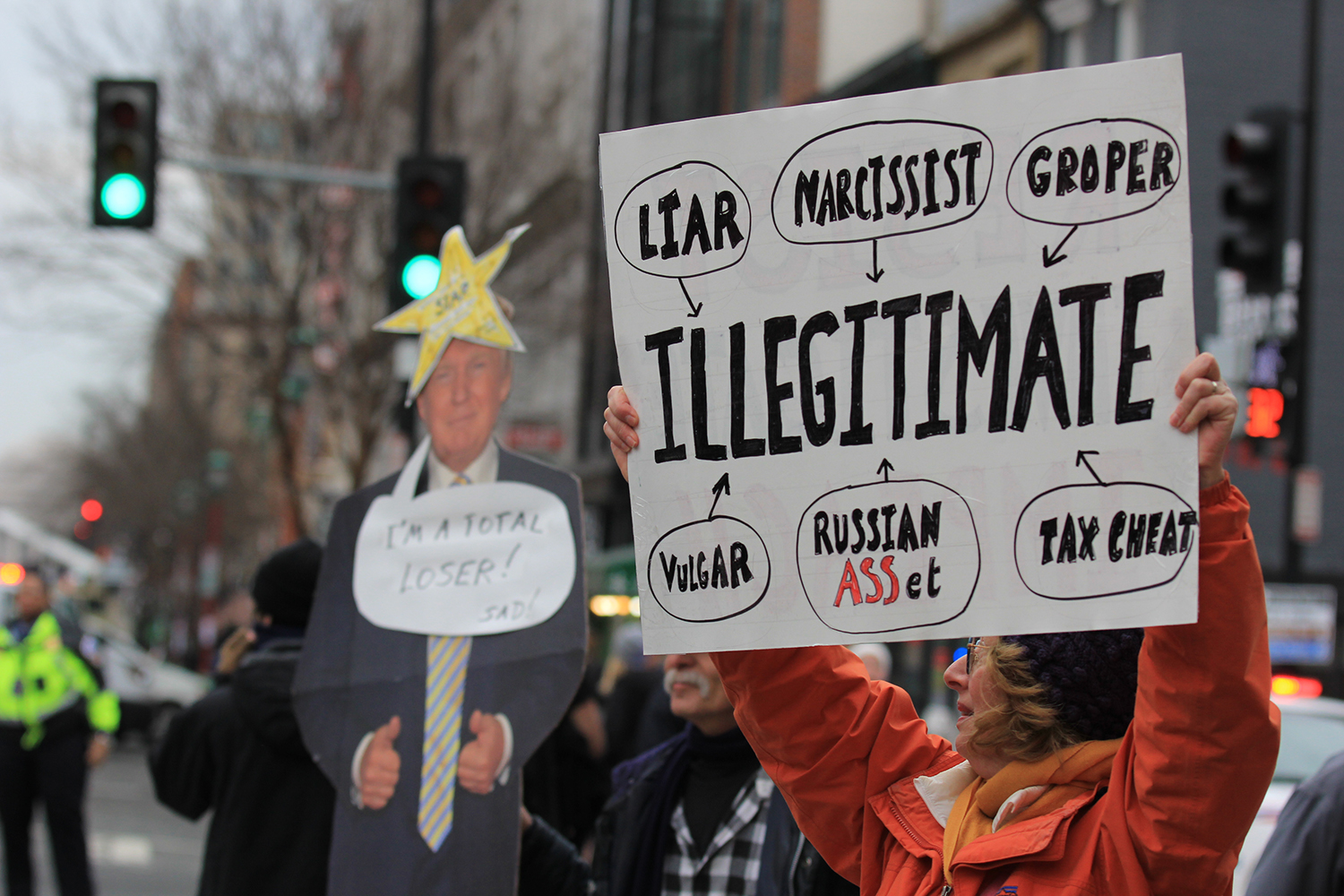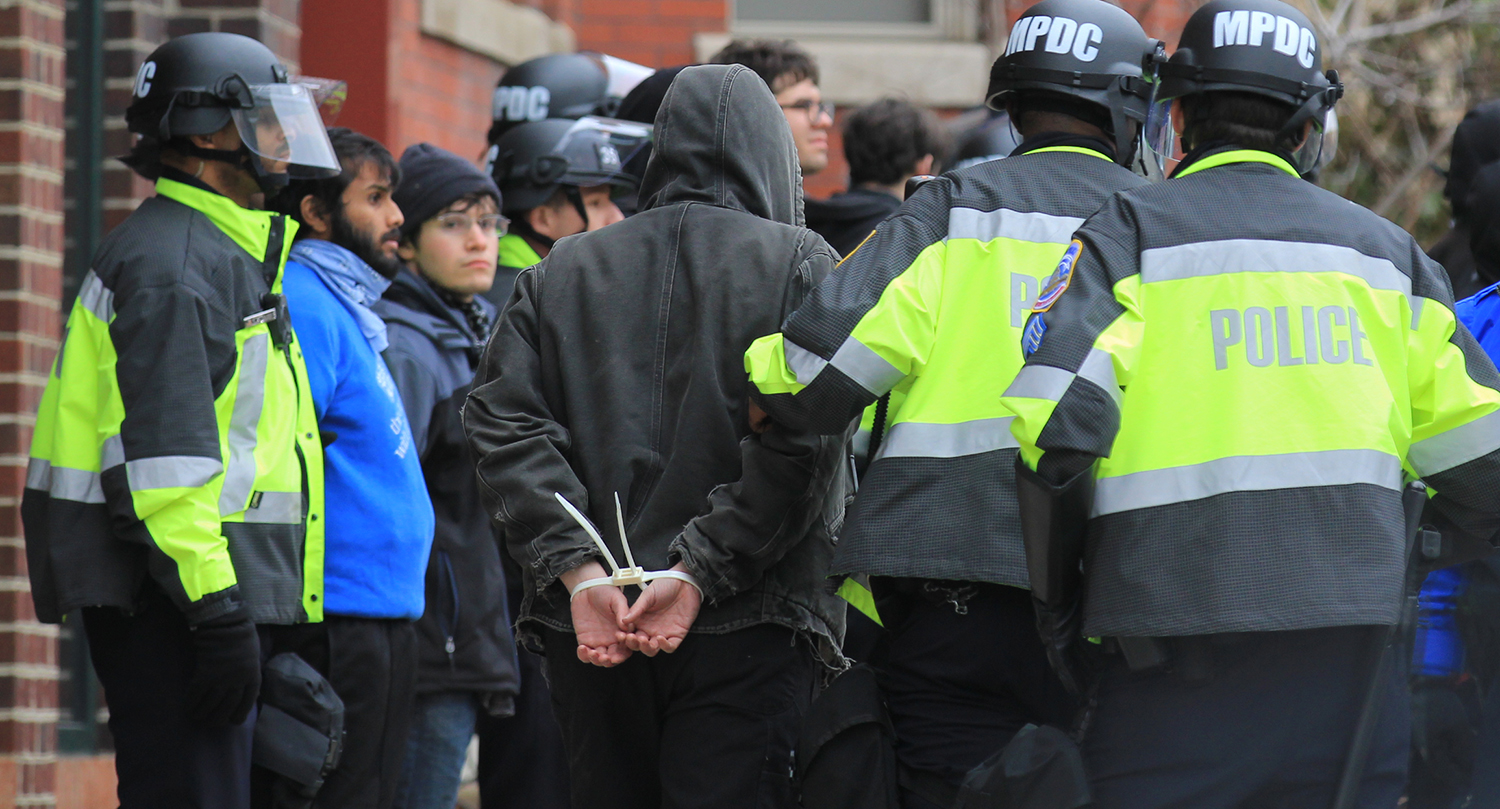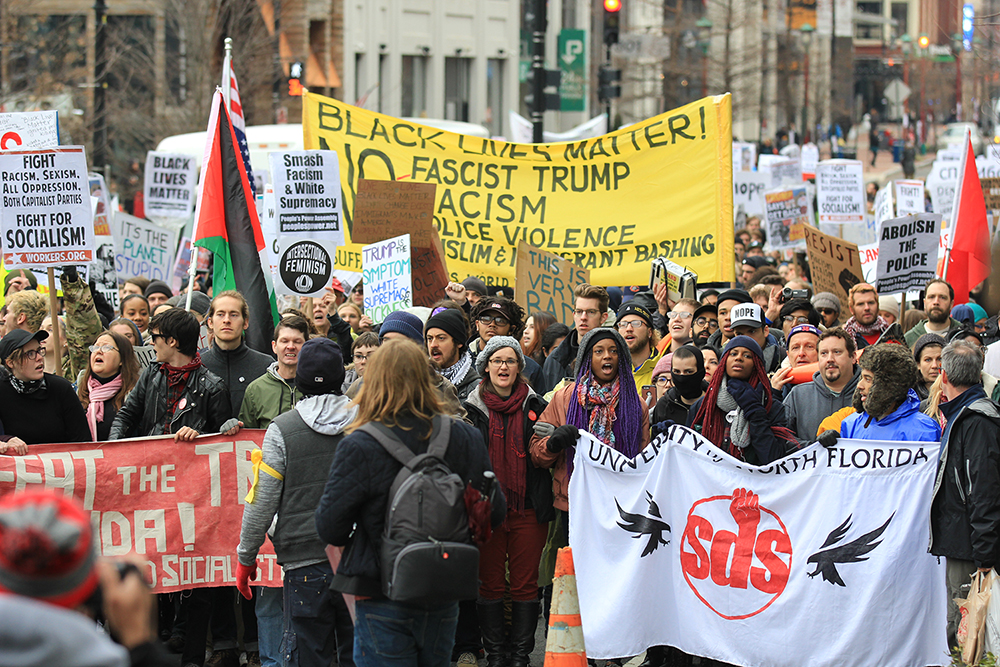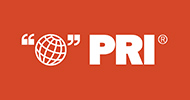Washington—Police fired pepper spray, tear gas, and flash grenades at clusters of protesters who smashed windows and lit fires as they marched in downtown Washington on Friday, hours after Donald Trump took office as the 45th President of the United States.
Police in riot gear and uniformed Secret Service officers cordoned off thousands of protesters who marched within blocks of the new president’s parade route along Pennsylvania Avenue. More than 200 protesters were arrested, according to District of Columbia Metropolitan Police.
Clashes between police and protesters intensified at around 2 p.m., after a group of protesters dressed in black with their faces covered by masks and bandanas arrived at the parade route on L and 12th streets in Northwest Washington and began taunting police officers.
For about thirty minutes before that, the protesters and police had been at a relative standstill. Police were making some arrests and protesters chanted “Let our friends go,” and “Why are you in riot gear? There ain’t no riot here.”
In a statement on the police website, officials said confrontations had begun as early as 10:30 a.m. and some people had been arrested on charges of rioting. Six police officers sustained injuries, three of whom were injured after being struck by flying objects, District of Columbia Mayor Muriel Bowser said at a news conference. The violence that resulted in the arrest of 217 people was organized and intentional, said Police Chief Peter Newsham at the news conference.
Ali Kurnaz, a 25-year-old community organizer from Orlando, Fla., stood near the police line during the standoff. The majority of people there were peaceful protesters who “want to see justice for their fellow comrades who have been arrested,” he said.
The clashes marred a protest that had started peacefully at Union Station several hours earlier. Hundreds of people gathered at Columbus Circle, just outside the station, by 8 A.M. They carried sometimes obscene signs mocking Trump’s relationship with Russian President Vladimir Putin, and rejecting the new president’s positions on immigration and climate change. Several people carried signs reading, “Not my president” and “Black Lives Matter.”
Alex Richker, 26, carried a sign that read, “We must all face a choice between what is right and what is easy,” a message he said was directed at Trump supporters.
Richker of Baltimore said he had voted for Hillary Clinton and joined the protests to declare that women, Muslims and others in the United States “who have been attacked or made to feel not welcome [are] welcome in my home and the country they want to belong to.”
The protesters began to march north to McPherson Square within two blocks of the White House at 11 a.m. During the 1.5-mile march, they chanted slogans against Trump, who was sworn into office just before noon. “From Palestine to Mexico, border walls have got to go,” some shouted; others chanted “When people are occupied, resistance is justified.” Some of the protesters carried American, Palestinian and communist flags. Many women wore knitted pink “pussy hats,” inspired by Trump’s 2005 comments that were leaked in October, in which he bragged about grabbing women’s genitals.
The protesters crossed paths with small groups of Trump supporters during their march. While members of both groups exchanged insults, there were no direct clashes between the groups.
One man, Donald Taylor, was selling Trump memorabilia close to the the protesters’ starting point. Taylor, who said he voted for Trump, described the protests as a “bunch of BS” by people who crave media attention. He said he had been selling Trump memorabilia since last February because it is a lucrative business.
“Make America great again, one shirt, one hat at a time,” he said.
Desmond Abrams, 24, traveled to the nation’s capital from Buffalo, N.Y., to “do my part to protect civil liberties against the onslaught of fascism,” he said. The community organizer did not vote in the 2016 presidential election, citing a “moral objection” to both major party candidates.
Protest organizers had obtained a permit to march on the route along Massachusetts Avenue from Union States to McPherson Square. When they reached that point, they announced that protesters who wanted to continue marching could do so, but at risk of arrest.
Most of the crowd continued marching to 12th and L Streets, NW, where dozens of police officers lined the street, some wearing black uniforms, carrying black batons, and wearing helmets that covered their faces. Other officers wore blue and black jackets and bicycle helmets, while others, whose faces were covered with black masks, wore white helmets and neon green jackets with the word “Police” spelled across the back. A row of police bicycles served as a dividing line between the protesters and police.
Anthony Rabatin, 20, said he felt the police were trying to intimidate people from exercising their First Amendment rights. “I know they have a job to do,” he said, “but we’re not going to go away.”
Richard Bastow, a 67-year-old retiree who had not protested at an inauguration since that of President Richard Nixon in 1973, said he was pleased with the large number of protesters.
“Protest will become a way of life for many people,” he said.

